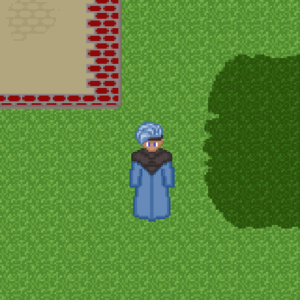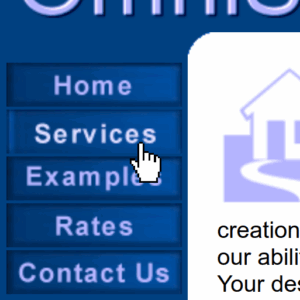The past two weeks have gone by too quickly. I’ve had so many wonderful conversations with so many of our contributors and community friends at this point that I couldn’t be more confident that I’m in the right place. The next year is going to be a lot of fun and I’m looking forward to working with many more of you.
This next year will be fun. But it is also going to be a lot of work. I’d like to take a minute to talk about some of the work we need to do, and how you can help. Because the 2025 election cycle has begun.
## Governance
Being on the GNOME Foundation Board is, first and foremost, about governance. If you join the Board, you will probably do your onboarding with Rob. He’s good at it. He’ll walk you through a slide deck and the very first slide will contain this quote in 480pt font:
Governance is not management.
The full quote, from the second page of Kenneth Dayton’s book is:
Governance is not management. In my opinion, one of the worst sins of charitable organizations is that too often they do not distinguish between the two. Rather, they confuse the two responsibilities and in the process hamper the mission of the institution.
This is an important distinction. Joining the Board does not mean you’ll be managing staff. The Board exists to perform the functions you’ll see in the source material for the remaining 30 slides:
- Governance is Governance (Kenneth Dayton)
- Nonprofit Corporate Governance: The Board’s Role (Harvard)
- The Director’s Manual (Browning, Sparks)
- CharityLawyer: Nonprofit Law Simplified (Caritas Law Group)
These include (but are not limited to) responsibilities like:
- Oversight
- Making high-level decisions
- Long-term strategy
- Fiduciary responsibility
- Ensuring the right ED is in place
- Reviewing budgets
- Deciding policy
- Understanding the structure and duties of a 501(c)3 nonprofit
Riveting, I know. But! This isn’t everything. And if you’re still awake, I will tell you that we don’t just need policy wonks and 50-year strategists. There’s some hands-dirty work associated with the GNOME Foundation Board, too. Even though the Board is not designed to manage, it can help execute. Once upon a time, the Board member were the people who scrambled to arrange GUADEC every year. It helps to be a little scrappy and we could learn to reclaim a bit of that history.
## Finance
We could really use help with our finances. Our bookkeepers are absolutely metal and we’re very lucky to have them. Our Ops staff are super hard-working. But the Board rotates continuously. Not every Board will be able to read a balance sheet. We need to present the Board with a continuous view of finances — not just quarterly reports, but monthly reports which clearly describe our positions, our trajectory, and our best case / likely case / worst case. Financial clarity is paramount for an effective Board… but it’s also easier said than done.
If you love spelunking through spreadsheets, tying together multiple data sources, documentation, automation, or doing a wee bit of data science and visualization on Small Data, the Board might be for you! Know that this effort will take time and patience, though. You won’t find clarity overnight. Determination — to the point of stubbornness, perhaps — will be your best ally, here.
## Executive
In addition to finances, there are a number of committees in the Foundation. Some of these are Board committees and some are delegated committees. Committees, whether Board committees or not, all have some executive powers.
The most obvious of these is the aptly-name Executive Committee. A lot of work gets done here and it’s safe to say meaningful participation in the Exec Committee is almost a daily commitment in 2025. But there are other committees that could certainly use help (or even rebooting) and don’t require a daily commitment as a volunteer:
- Governance Committee (see Governance)
- Finance Committee (see Finance)
- Travel Committee
- Internship Committee
- etc.
Committee participation doesn’t specifically require that you join the Board. It’s also possible for the Board to appoint Officers … and we’ll do that! But if you really want to get stuck in, I strongly suggest standing for election. It doesn’t matter if you’re a lawyer, an accountant, a designer, or developer.
But beyond roles, who should stand for election? Let’s dig into that for a second.
## Representation
The GNOME community is massive. I still have so many people to meet. And there seem to be people from every walk of life, every community, every corner of the planet, every cultural background, every linguistic background. If you’re one of the unlucky people I’ve forced one of my excited 3-hour sermons upon, you probably know by now I’m a huge fan of Network Resilience. I gave a keynote once that talks about this (among many other things). The Foundation, and the Board in particular, is more resilient when it’s more diverse. If we all think the same way, all have the same upbringing, same background, same weaknesses in our thinking… this weakens the Foundation.
Someone recently told me they’ve thought about standing for elections for years but feel some Imposter Syndrome. I was shocked. This person has been contributing to GNOME for decades. They’re clearly very smart, hardworking, and talented. If such a strong candidate is just waiting there in the wings, I can’t help but believe there are other strong potential Board members just waiting for the right moment.
The right moment is now.
We have 2SLGBTQIA+ folks on the Board. We do have folks with disabilities, different language backgrounds, different continents. But we have only one woman (who also happens to be our only lawyer). We have no one from east of Europe. We can do better. I’m not worried any of you are going to apply to the Board because of your background. I worry that you, like my new friend mentioned above, might fight the temptation to stand for election because you think you don’t belong here.
You absolutely belong here. Bring your talent, your energy, your tenacity. Help us kick ass.
## No Nonsense
I’d like to take a minute to discuss some of the reasons not to join the Board.
First, we need Board members who will help paddle our wee canoe in the same direction. GNOME, both the Project and the Foundation, have experienced some real hardship in recent years. If it’s your intention to join the Board only so you can paddle sideways (or backwards), please put that thought on hold for a couple years. We just can’t support that level of disruption right now. We will have our disagreements but we all need to be on the same page.
Second, if everything above bores you but you have a single issue that you’re really dreaming of hammering home… that’s also a recipe for ineffective Board participation. If elected, you will be on the Board for TWO YEARS. That’s a long time. Make sure you want to be there to work with us for the entire two years. It will be hard work. And it will be worth it.
## Hard Work
While talking to Maria (@marimaj) today — one of my favourite contributor conversations so far — she said something that resonated with me: “Almost no one appreciates just how much work is required! The Foundation requires so, so much work to function properly.” She then proceeded to name a bunch of folks who contribute day and night. Her hard-won understanding is built upon experience. She’s been a part of the community for a long time, and she’s seen how hard staff and volunteers work to keep the Foundation moving.
If you want to know how much work the Foundation requires, ask her. Ask me. Ask any Board member.
If you want to put in the work, I want you to stand for election. I’m looking forward to seeing your nomination. 🙂
To announce your candidacy, read Andrea’s post and follow the instructions. (Thanks Andrea!)

